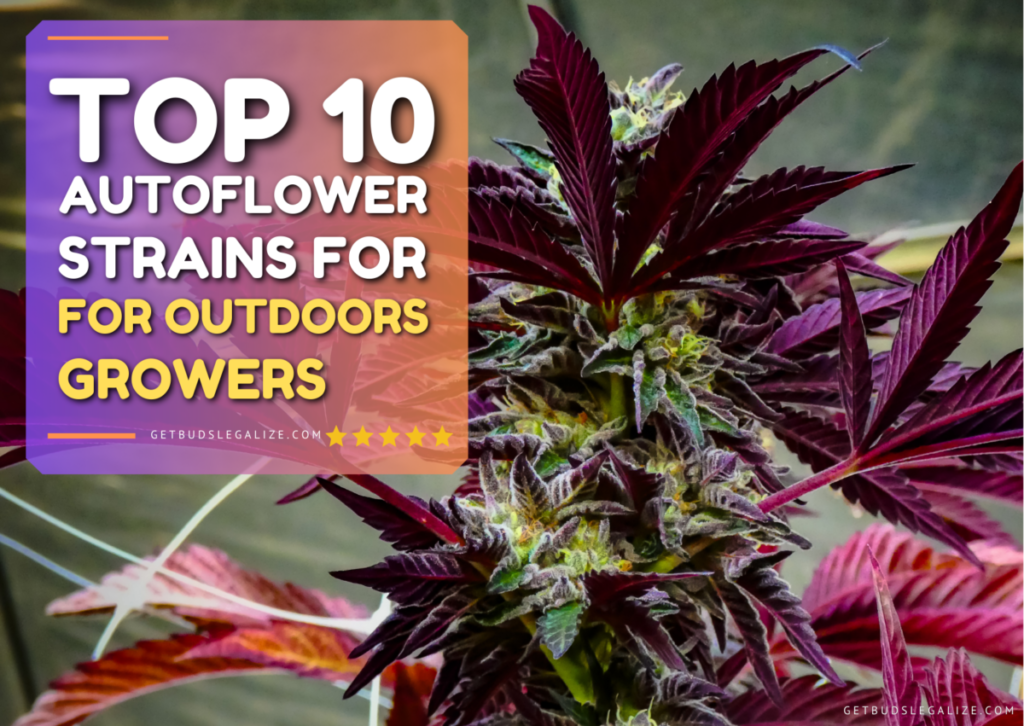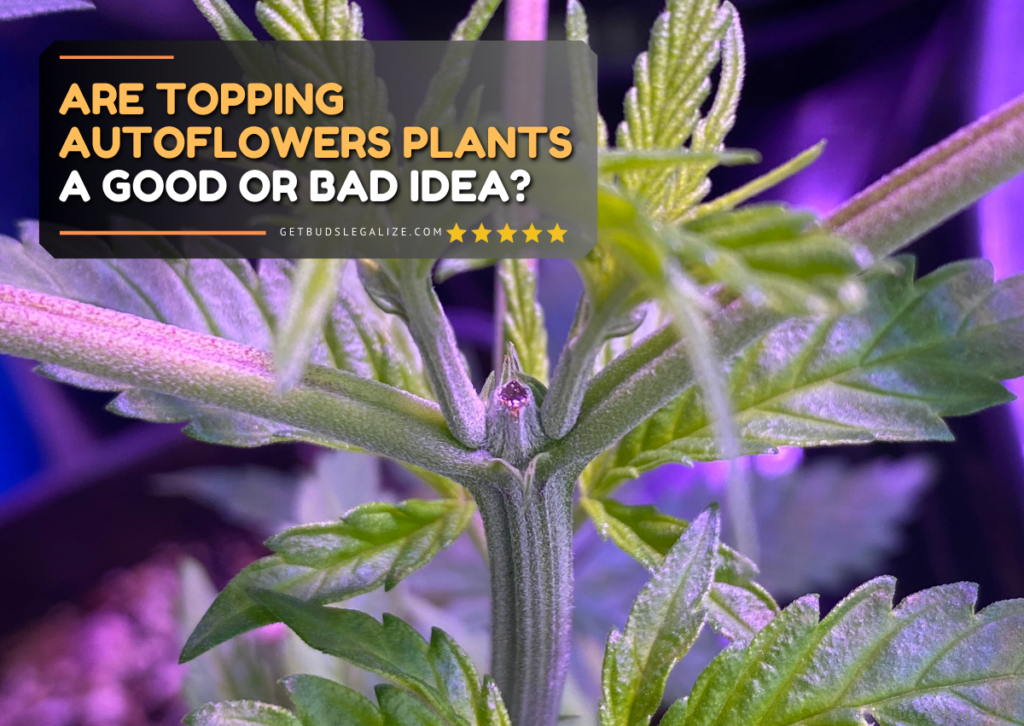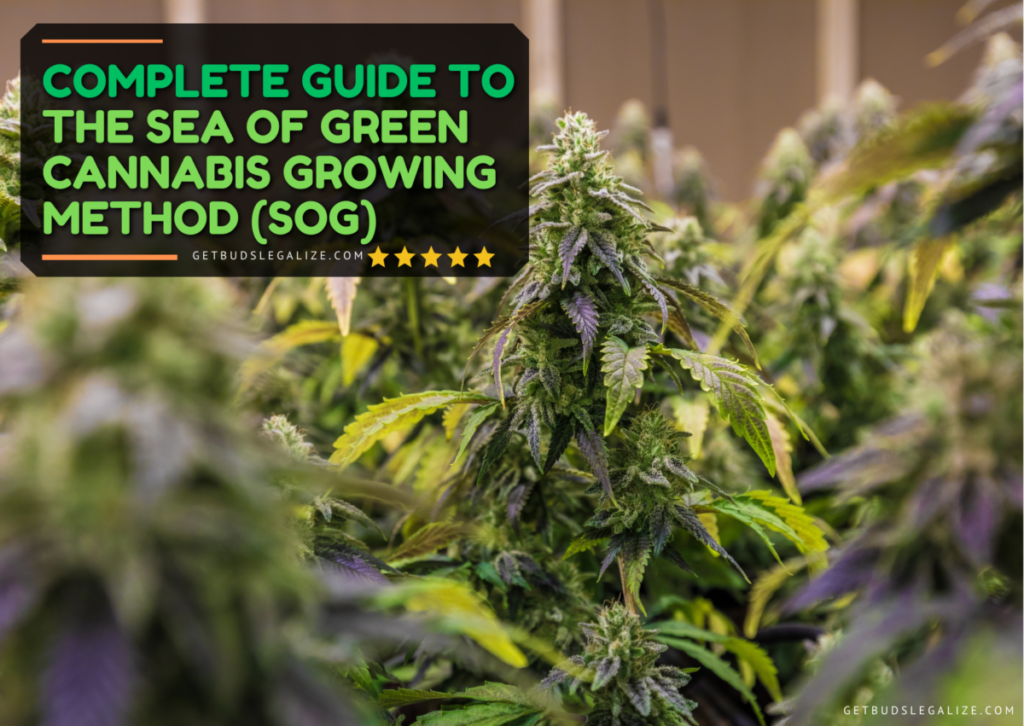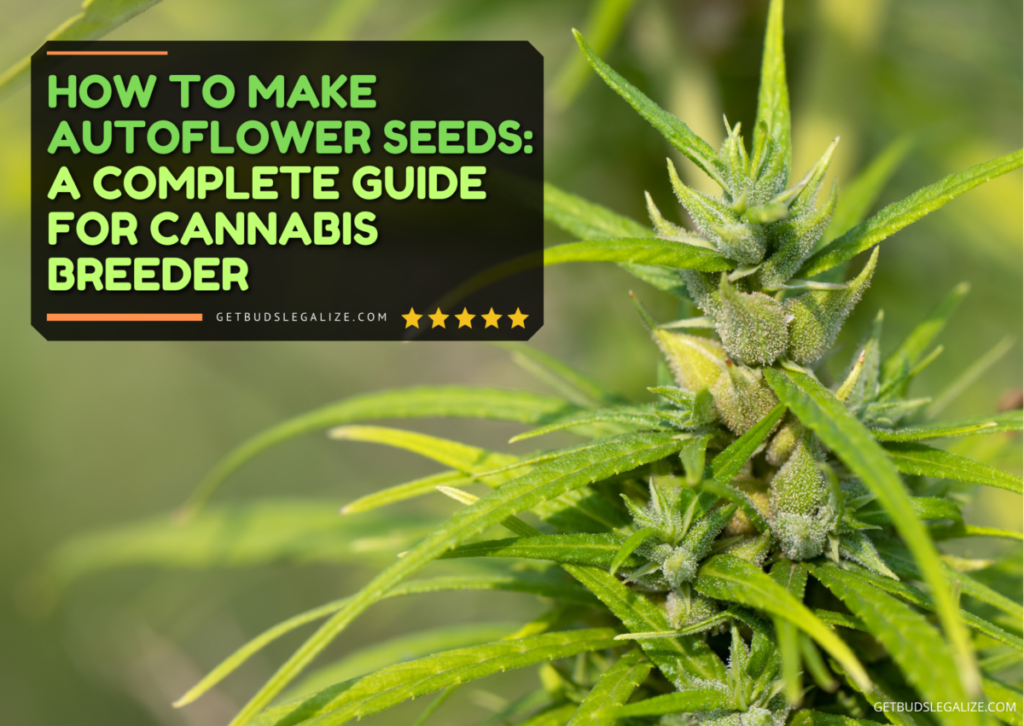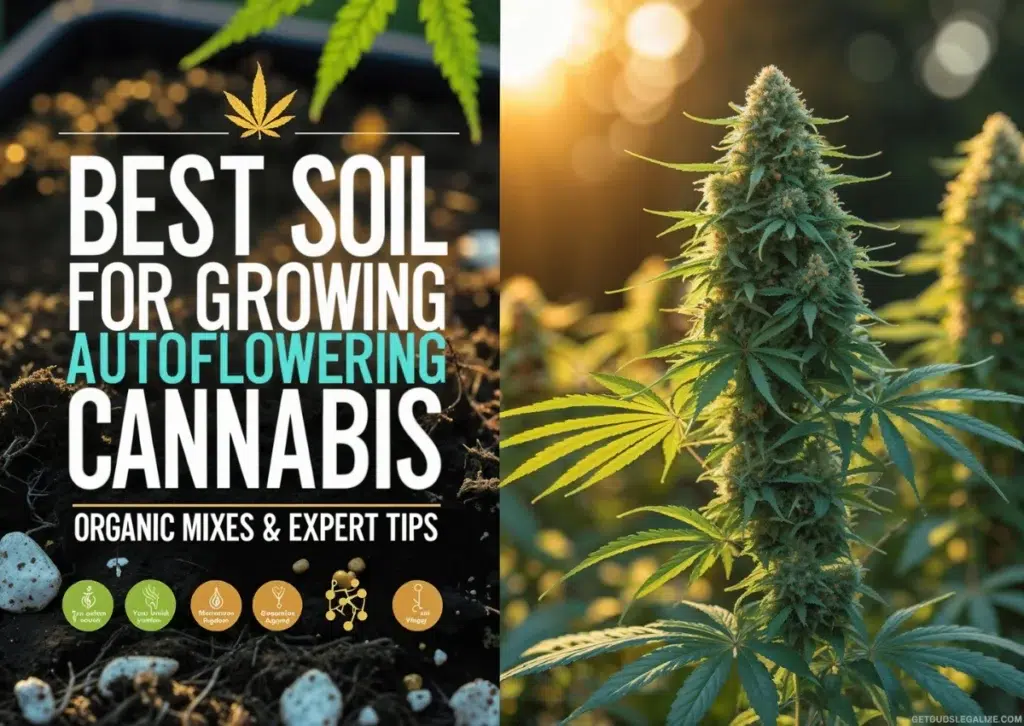What Is the Best Light Schedule for Autoflower Cannabis? Simple Tips for Bigger Yields
Autoflowering cannabis strains have revolutionized home cultivation with their ability to flower based on age, not light cycles. But don’t let that fool you into thinking lighting doesn’t matter. In fact, light intensity, spectrum, and schedule are crucial for unlocking their full potential.
This guide cuts through the noise and breaks down the best autoflower light schedules—from seedling to harvest—so you can fine-tune your grow room for massive yields, healthy plants, and potent buds.
Understanding How Autoflowers Respond to Light
Unlike photoperiod cannabis strains that rely on changing daylight hours to initiate flowering, autoflowering plants follow an internal genetic timer. This means they’ll naturally shift from the vegetative stage to flowering—usually around weeks 3 to 4—regardless of the light cycle.
Still, light remains their primary source of energy. The intensity, duration, and spectrum of light directly influence how well your plants grow, how large and dense they become, and how much cannabinoid content they develop.
Even though autoflowers don’t need a dark period to bloom, the right light schedule and quality can be the difference between wispy buds and dense, trichome-rich colas.
Related Article:
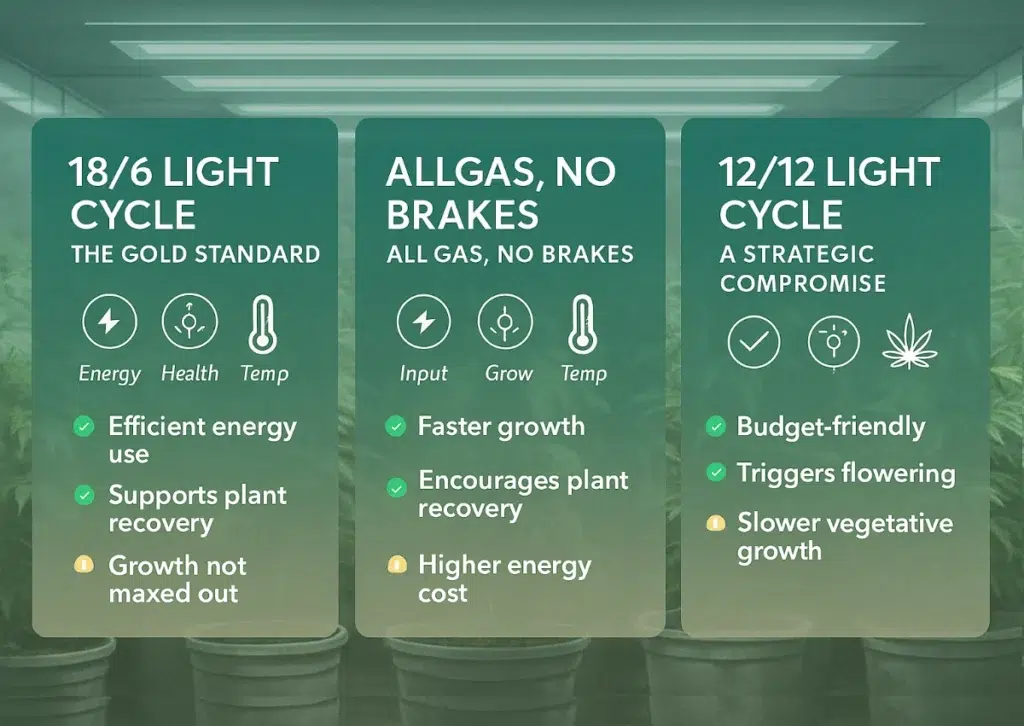
18/6 Light Cycle: The Gold Standard for Balance
The 18 hours of light followed by 6 hours of darkness schedule is one of the most trusted and effective lighting strategies for growing autoflowering cannabis plants. This balanced cycle provides ample energy for photosynthesis and vegetative growth, while the dark period helps mimic natural environmental cues that support plant health.
✅ Why 18/6 Works So Well:
- Efficient energy use: Less power consumption than a full 24-hour cycle.
- Encourages plant recovery: The dark period may support hormonal balance and root development.
- Promotes healthy morphology: Leads to compact, vigorous growth with dense bud sites.
If you’re looking for optimal yield and plant health without overworking your grow room, 18/6 is your safest bet.
24/0 Light Cycle: All Gas, No Brakes
Some growers prefer to keep the lights on round the clock, pushing plants to their limit with a 24/0 light schedule. Autoflowers don’t require a dark phase to flower, making this approach viable, especially for speed runs or micro-grows.
✅ Pros of Going Full Throttle:
- Faster vegetative development: With no interruptions in photosynthesis, plants grow faster and may reach maturity sooner.
- Potential for bigger yields: More light exposure means more energy for growth and bud formation, if other conditions are optimal.
- Great for dialed-in setups: Best suited for growers who have strong environmental control, including airflow and temperature stability.
⚠️ What to Watch Out For:
- Increased electricity usage: Running lights 24/7 will spike your power bill—something to consider if you’re growing at scale.
- No rest period: Some sensitive strains may respond negatively to constant light, showing signs of light stress or slowed development.
- Risk of heat buildup: Without a dark period to cool down, your grow room may overheat unless you have robust ventilation in place.
Tip: If you’re running high-efficiency LEDs and want to accelerate your grow, 24/0 can be a game-changer—just be vigilant with monitoring.
12/12 Light Cycle: A Strategic Compromise
While 12/12 is the go-to for photoperiod flowering, it’s suboptimal for autos. Less light means less energy, and that can directly impact plant size and harvest weight.
Still, this schedule has its uses:
✅ When 12/12 Makes Sense:
- Mixed canopies: If you’re growing autoflowers alongside photoperiod strains, 12/12 keeps photoperiods flowering while autos continue growing, though not at full potential.
- Heat-sensitive environments: In hot climates, using a shorter light cycle (especially with lights on at night) can help prevent heat stress during peak daytime temperatures.
- Budget-friendly grows: Running lights for just 12 hours a day can significantly cut electricity costs, making this option attractive for growers on a tight budget.
⚠️ Expect Reduced Yields:
A 12/12 schedule limits daily light integral (DLI)—the total amount of light your plants receive per day—which directly affects bud size, density, and overall harvest weight. Expect:
- Smaller, more compact plants
- Fewer bud sites
- Slower overall development
💡 Pro Tip: If you’re limited to a 12/12 cycle, you can still grow healthy autoflowering plants. Focus on genetics, nutrients, pruning, and light intensity to maximize output within those constraints.
Related Article:

The Best Light Spectrum for Autoflowers: Blue vs. Red vs. Full Spectrum
Light isn’t just about hours—it’s about quality. And when it comes to spectrum, different wavelengths trigger different growth responses in cannabis plants. Dialing in the right spectrum at the right time gives your autos the visual cues they need to explode with foliage or stack up flower sites.
🔵 Vegetative Stage: Blue Light (6500K)
Cool blue light in the 6000–6500K range is perfect for the seedling stage and vegetative stage. It sends the signal: “Time to build structure.”
- Encourages short, bushy growth
- Supports strong roots and compact node spacing
- Minimizes stretching
Perfect for seedlings and vegetative growth, blue-dominant light helps autoflowers channel their early energy into sturdy stems and lush foliage.
🔴 Flowering Stage: Red Light (2700K)
As flowering kicks in, red light (~2700K) takes the baton. It mimics late-summer sunlight and encourages floral expression.
- Boosts bud development and swelling
- Stimulates terpene and resin production
- Adds light vertical growth for cola support
Plants under red-heavy spectrums shift focus to reproductive growth, transforming energy into dense, aromatic flowers.
🌕 Best of Both Worlds: Full-Spectrum LEDs
For growers who want simplicity and performance, full-spectrum LED grow lights are the gold standard. These fixtures blend red and blue wavelengths—plus supportive bands in green, UV, and IR—to nourish your plants from seed to harvest.
Why growers love full-spectrum LEDs:
- No bulb swapping required
- Lower heat output than HID systems
- Higher efficiency with improved cannabinoid production
If you’re running autos from start to finish, full-spectrum lighting creates a seamless, photosynthetically balanced environment that adapts as your plants evolve.
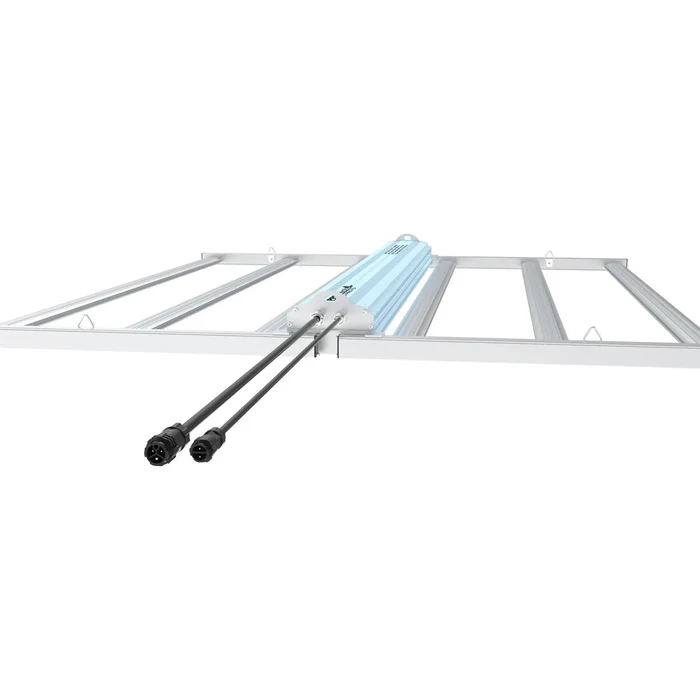
PPF Tech HG340 PRO FS1 – 340W LED Grow Light
- 🌈 Spectrum: Optimized Veg Spectrum (Osram/Samsung)
- 📏 Product Size: Large profile for wide coverage
- ⚡ Power Draw: 340W
- 🔋 PPE: 2.6 μmol/J
- 💡 PPF: 885 μmol/s
- 🔧 LED Chip: Samsung + Osram Arrays
- 🌿 Cultivation Coverage: Up to 120×120 cm (Veg)
- 🌱 Yield: Ideal for vegetative-phase growth
Related Article:
Sea of Green (SOG): Autoflower Efficiency at Its Finest
Sea of Green (SOG) is tailor-made for autoflowering cannabis. This technique focuses on growing many small plants close together, creating a flat canopy that soaks up every photon of light. With autos’ compact size and fast turnaround, SOG is a dream setup for maximizing space, speed, and yield.
✅ Why SOG Shines with Autoflowers
- Faster harvests: With short life cycles, autos in SOG can finish in as little as 8–10 weeks.
- Efficient use of space: Max out your grow tent by cultivating multiple small plants instead of a few large ones.
- Uniform growth: Quality autoflower genetics yield consistent height and structure—ideal for even canopy formation.
🌿 Pro Tips for a Killer SOG Setup
- Plant density: Grow 4–6 autoflowers per square meter using 7–10L pots for balanced size and yield.
- Pot size strategy: Downsize to 5–7L containers to pack more plants per m² and control vertical growth.
- Go LST-only: Stick with Low Stress Training (LST) to shape your plants. Avoid topping, fimming, or high-stress techniques—they can shock your plants and slow progress due to autoflowers’ fixed timeline.
- Genetic consistency is key: Use uniform, stable autoflower seeds to ensure even development and a synchronized canopy.
- Lighting = critical: A high-quality full-spectrum LED ensures equal light distribution across all bud sites. No dark corners allowed.
SOG with autos isn’t just space-efficient—it’s also one of the most visually satisfying techniques to run. Few things look as good (or yield as nicely) as a forest of sticky, uniform colas under a tuned LED rig.
Related Article:
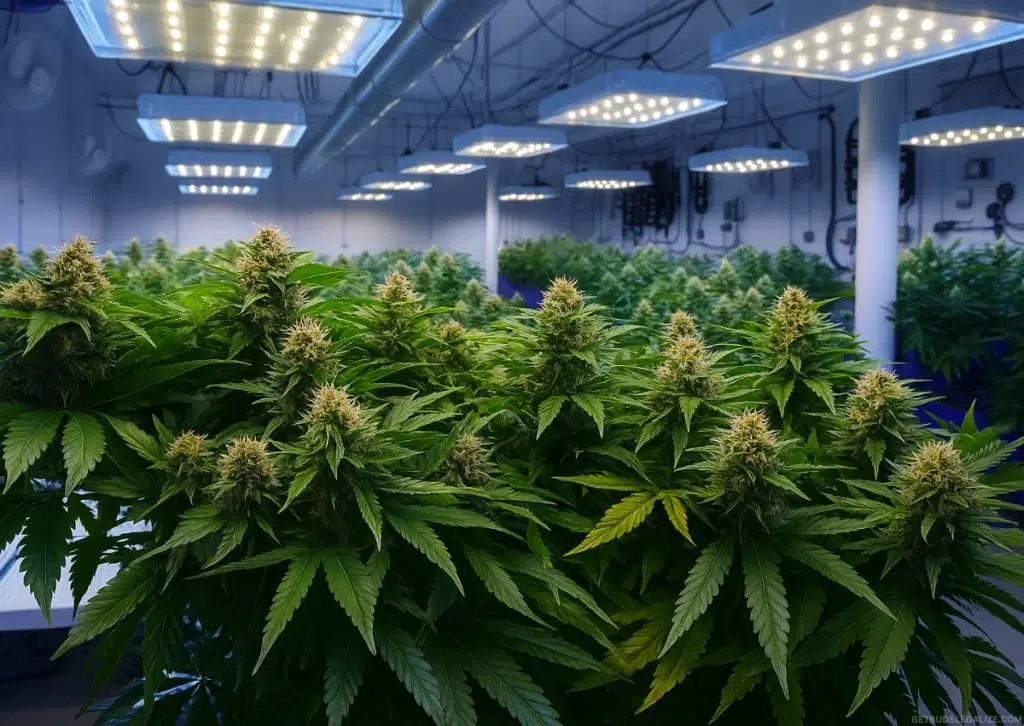
Pro Tips to Maximize Autoflower Lighting Success
Lighting is the cornerstone, but it doesn’t work in isolation. These final adjustments elevate your grow from good to exceptional.
1. Start in the Final Container
Autoflowers don’t like to be disturbed. Their short vegetative phase leaves little room for recovery, so skip the transplants and start your seeds in their final pots—ideally 7–10L fabric containers with great drainage and aeration.
2. Automate with Reliable Light Timers
Let technology handle consistency. A digital timer ensures perfectly timed 18/6 or 24/0 cycles every day. Automation also reduces the chance of human error and gives you one less thing to worry about.
3. Keep the Environment Dialed In
Lighting works best in harmony with environmental factors.
- Temperature: Keep it between 22–28°C (72–82°F).
- Humidity: Maintain 65–70% during veg and gradually reduce to 50–55% in flowering.
- Use a hygrometer and thermometer to track conditions, and make micro-adjustments with inline fans, humidifiers, or heaters as needed.
4. Boost Light Efficiency with Reflective Surfaces
Make every photon count. Line your walls with Mylar, panda film, or flat white paint to reflect light evenly across your canopy. This reduces shadow zones and improves uniformity, especially critical in SOG setups.
5. Prioritize Airflow for Light + CO₂ Synergy
Light drives photosynthesis, but without airflow, your plants grow stalls. Use oscillating fans to:
- Distribute fresh CO₂ to the leaves
- Prevent hotspots under LED fixtures
- Strengthen plant stems for fatter flowers
Proper air movement also helps prevent mold and mildew, especially during high-humidity phases.
Final Thoughts: Light Smarter, Not Just Longer
Autoflowering cannabis takes the guesswork out of blooming, but successful cultivation still depends on intentional lighting. Whether you go with an 18/6 classic cycle or push the limits with 24/0, your growth’s success hinges on thoughtful spectrum, stable climate, and responsive care.
Keep experimenting. Track everything. Your next grow will always be better than your last.
Related Article:
Frequently Asked Questions (FAQs) about Autoflowering Light Cycle
The most popular autoflower light cycle is 18/6 (18 hours of light and 6 hours of darkness). This schedule offers a balance between energy efficiency and optimal growth, supporting both the vegetative stage and flowering stage of autoflowering cannabis plants. However, some growers opt for a 24/0 light to push for faster growth.
Yes, you can grow autoflower plants under 12/12 lighting, but it’s not ideal. While they will still flower due to their age-based genetics, you’ll likely see reduced yields. This method is typically used when growing autoflower strains alongside photoperiod cannabis plants, or when trying to reduce heat or electricity usage.
Not necessarily. Since autoflower cannabis seeds aren’t light-sensitive for flowering, they can handle continuous light. However, giving them 6 hours of darkness may help improve plant health, metabolism, and root function. Experiment to see what works best for your environment and strain.
During the seedling and vegetative stage, use blue-rich (6500K) LED grow lights to encourage compact, leafy growth. For the flowering stage, switch to red-rich (2700K) spectrums to stimulate dense buds. Full-spectrum LED grow lights are ideal for covering all growth stages of autoflowering strains.
Yes. Modern LED grow lights or full-spectrum fixtures can be used throughout your grow. They support healthy development from cannabis seedlings to flowering plants, reducing the need to swap fixtures or adjust your setup mid-grow.
Autoflowering plants can thrive with 18–24 hours of light per day. More daily light can lead to better growth, but increased light hours may also raise heat and electricity costs. Keep your light hours consistent with a digital timer to avoid light stress and boost stability.
Absolutely! Growing autoflowering cannabis is often easier for beginners because there’s no need to adjust light cycles to trigger flowering. They also have faster growth stages and can go from seed to harvest in as little as 8–10 weeks, perfect for those new to cannabis cultivation.
Yes, you can grow autoflower cannabis seeds outdoors with natural sunlight. They’re especially ideal for summer grows with long days. Just ensure they receive at least 12–18 hours of daily light integral to support strong development. Indoor growers can mimic this using grow lights.
To support strong growth and high yields, maintain key environmental factors: keep temperatures between 22–28°C (72–82°F), humidity between 50–70%, and ensure consistent air circulation. These conditions promote healthy autoflowering cannabis plants, optimize photosynthesis, and reduce risks like mold or stress.
Yes. Autoflowering cannabis has a limited vegetative window. Transplanting can stress the plants and stunt growth. To avoid setbacks, start seeds directly in their final container and use a light, airy soil mix that promotes strong root expansion and overall plant health.
Light stress can negatively impact your autoflower plants if not addressed early. Common signs include leaf curling (canoeing), bleached or yellowing leaf tips, and stunted growth, especially during the vegetative stage or flowering stage. This usually happens when LED grow lights are too close or too intense.
To avoid stress, maintain a safe distance between lights and your autoflowering cannabis plants, especially during the seedling stage, and watch for environmental changes that affect plant health.
Yes—but stick to low-stress training (LST) methods. Techniques like gentle bending help spread the canopy, allowing more light to reach lower bud sites. Avoid high-stress methods like topping or fimming, as autoflower plants recover slowly due to their quick lifecycle.
ILGM Fertilizer:
Feed Your Plants Right

The Ultimate Cannabis Fertilizer – designed to fuel every stage from seedling to harvest.
✅ Feeds 5+ plants
✅ Big savings with bundle
✅ Works in soil, coco, or hydro
✅ Supports bigger, healthier yields
ILGM Plant Protector:
Ultimate Cannabis Protection

Shield your plants from pests and disease—naturally and effectively.
Protect From Seedling to Harvest
✅ Protects up to 20 plants
✅ Works in soil, coco, or hydro
✅ Fights pests & diseases fast
✅ Keep your grow healthy & stress-free




